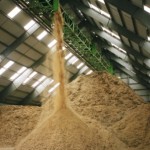Introduction
Recently, I have had several inquiries regarding the requirements for conveyor safety and guarding. There are many organizations that dictate safety requirements and provide guidelines for guarding, and it can be confusing as to which organization has authority. The end-user must know which apply in his area.
This article provides general instructions as to where information can be found regarding WorkSafe and OHSA requirements with regards to conveyors in BC, AB and ON. Also included are comments regarding general conveyor safety and guarding experience that the author has gained over the years. Continue reading →

